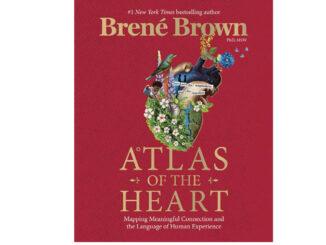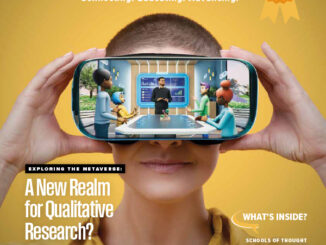
By Jason Rice, Vice President of Qualitative Research – Gaming, Magid, Minneapolis, Minnesota, jrice@magid.com
It’s hard to deny the relevance of video games today. The medium has grown from playing Pong on a wood-paneled Atari to massive games like Grand Theft Auto V, which has sales numbers1 that make the biggest Hollywood blockbusters’ earnings look like chump change.
However, there’s more to this story than just dollars and cents. The truth is that gaming has achieved a level of cultural relevance that’s hard to ignore.
The Entertainment Software Association’s recent 2023 Essential Facts2 reports that 212.6 million Americans play video games at least once a week—that’s 65 percent of the country! This isn’t just Candy Crush on the phone, either. Fifty-eight percent of those players use multiple platforms like PCs or consoles, such as the PlayStation 5 or Xbox Series X.
I saw this recently while interviewing teens and tweens about the role of gaming in their lives. I heard stories from both kids and parents about how gaming has helped them stay connected with friends in an increasingly isolated world, especially during the COVID-19 lockdowns, and has remained central to their social relationships.
I also heard how gaming is teaching valuable life lessons. One father explained that video games are an important part of how he teaches his kids resilience and critical thinking, life skills reflected in the wide-ranging achievements of his children. Games aren’t just something to fill time; they’ve become a vital part of our culture.
What’s a Live Service?
You may have noticed the rising prevalence of games that “don’t end” in the traditional sense—games like Call of Duty or World of Warcraft—which are different than more traditional linear titles like God of War or Marvel’s Spider-Man. These are broadly referred to as live service or ongoing service games; they have taken the prime spot in terms of how players spend their time (and money) today. The fact that these games provide a seemingly endless amount of content for players means that they can’t be examined solely as a single product, but instead as more of an ongoing relationship between players and a game that may wax and wane over time. Also, because many of these games are multiplayer-focused, there’s a greater weight on social relevance that goes beyond just recommending what games to play.
Expansion Beyond the Gaming Industry
In the last decade, media and entertainment giants have increasingly taken notice of this relevance. For example, in 2019, Netflix’s Reed Hastings declared that Netflix’s greatest competitor was time spent gaming, not a competing streaming service like Disney+. Not surprisingly, Netflix has started on a path of investing heavily into creating its own gaming platform,3 purchasing game studios, and leveraging its library of intellectual property (IP) to build interactive entertainment experiences.
Other companies are also looking for their own piece of the pie, drawing on existing gaming IP to launch new entertainment properties, for example, NBCUniversal’s The Super Mario Bros. Movie or HBO’s The Last of Us.
Tech companies are also paying attention to gaming’s cultural relevance and working to build or expand gaming ecosystems. Some notable examples include Apple’s subscription service, Apple Arcade, or Amazon Games’ new titles like New World and Lost Ark.
However, nongaming companies are discovering that success with gamers and gaming IP is not guaranteed. The divisive response to Paramount’s Halo show4 is a great example. Misunderstanding the core audience of a gaming franchise can lead to shows that feel like they missed the point, leaving dedicated fans cold.
These synergistic forays, whether successful or not, have sent a clear message that dominance over gaming by companies endemic to the industry is under threat. Former PlayStation president and CEO Shawn Layden recently reminded people during a keynote speech5 at the GamesIndustry.biz Investment Summit that companies outside of gaming could be viewed as “barbarians at the gate” of an ever-evolving industry and that the disruptive role of big investments from broader tech and media should be kept in mind.
What this means for qualitative researchers is that even when we aren’t working in a gaming-specific vertical or courting a gaming company, it’s increasingly likely that gaming will become part of the work we do. This could happen through gaming-specific projects or because of the influence of gaming habits on the behaviors of consumers broadly.
Video Game Genres
- Action Games (i.e., Street Fighter)
- Adventure Games (i.e., Siberia)
- Fantasy Games (i.e., Dishonored 2)
- Platform Games (i.e., Mario)
- Rhythm Games (i.e., Guitar Hero)
- Role-playing Games (i.e., World of Warcraft)
- Shooter Games (i.e., Call of Duty)
- Simulators (i.e., The Sims Series)
- Sports Games (i.e., FIFA)
- Strategy Games (i.e., League of Legends)
 How to Prepare for Working with Gamers
How to Prepare for Working with Gamers
Like many specialized topics, doing research around gaming can feel daunting to those who aren’t spending their weekends grinding kills in Call of Duty or taking on a new dragon in World of Warcraft. The culture, jargon, and specifics of gaming can be intimidating. Here are some tips that can help you best connect with consumers when it comes to the role of games in their lives.
- Gain knowledge and experience by playing games.
While you may think that being a subject-matter expert is all about passing the sniff test from respondents (which is true to a certain degree), the reality is that effective probing in video games often demands knowing the specifics of the game or type of game that you’re researching—whether it’s a deep-dive study on a specific game or evaluating key elements of a video game adaptation for a streaming service.Sometimes, there’s no better way to learn about a game than trying to play it on your own. This is particularly true if you’re running a playtest or examining something like the first-time user experience (FTUE) or initial hours of a game, but it also is vital for broader brand work. Playing a game not only gives you vital firsthand experience with the game itself but also with the community, providing an important perspective on what the community looks like from the outside.This can also help with client presentations. Providing detailed feedback on somebody’s artistic labor of love can be more difficult than critiquing product design for routers. Authentically revealing your personal connection with a game can go a long way when delivering critical feedback. - Get up to speed with secondary research.
All is not lost if you’re not a hardcore gamer, though. I’ve invested many hours researching games that I don’t play, and I’ve still been able to speak competently about them with gamers and executives. Here are a few shortcuts that can help:
Reddit: Reddit is a huge community for gaming and one where you can easily capture the pulse of what’s going on broadly in a game, such as controversies, recent patches, updates, or just what (and, more importantly, how) people are talking about the game. Just be careful; while Reddit can be a valuable source of information, it’s also representative of the most engaged (and often most outraged) players of a game, so consider it a reference and not a single source of truth.
Twitch: Live streaming and commentary are huge parts of the gaming community today, and the opinions of major streamers often inform the collective groupthink of gamers; for instance, big streamers like Asmongold can inspire massive audiences of players to migrate from one game to another. Watching streamers play the game or type of game you’re researching can provide two valuable benefits: it lets you actually see the game in question being played, and it gives you a sense of what topics you may want to push on. This is particularly important if you sense that participants might just be parroting back to you (more on this later).YouTube: While YouTube isn’t entirely a streaming platform in the same way as Twitch, it can be a much more approachable way to get a quick vibe check on a game. For example, YouTube shows what it looks like, how people play it, and what people are thinking about the current state of the game. Reaction videos and reviews are everywhere and can serve as an easy and quick temperature check.These tactics can help you not only speak the language of the front room but also the backroom, earning sage nods from development teams or helping bridge the gap between consumers and marketing teams when you ask just the right follow-up questions about specific gameplay elements.
- Take steps to prevent antagonism from bleeding into group dynamics.
While all focus groups have their own problems with groupthink and self-censoring, gaming provides unique challenges due to the gaming communities’ highly charged and potentially confrontational nature.On the one hand, the enthusiasm and energy of gamers are huge benefits. Like sports enthusiasts, gamers are often comfortable and experienced talking about the topic at length. This can make moderating groups less like pulling teeth and more about reining in overly chatty participants—a good problem to have! On the other hand, high engagement can make gamers prone to groupthink when it comes to oft-debated topics. A good example of this is microtransactions (paying a small amount of money for a costume or other item in a game). The practice of requiring microtransactions is something that gamers are conditioned to hate, even if they actually have a complex and interesting relationship with them. A broader example is the gaming community’s prevailing opinions about Electronic Arts—a major game publisher that’s often been rated as the “worst company in the world.” Yet, the brand remains among the top performers in the industry. But the most important challenge is overcoming self-censoring, which can be a byproduct of negative interactions within the broader gaming community. Every Call of Duty player has been told that they’re dragging their team down because they suck or have had their question about a boss in Dark Souls shut down with an insult about how they just need to be better at games. As a result, taking a risk on a potentially unique thought in a group might remind them of negative interactions they’ve had around gaming and lead to them clamming up in the room.So, you may need to work a little harder to overcome these unique social dynamics at play in gaming discussion groups.Here are two effective strategies:
Prework or Independent writing—This is a time-honored qualitative tactic that lands especially well with gamers, as internalized gatekeeping can prevent participants from sharing their honest opinions in the room. Having them write their experiences down can help offset this, primarily if the moderator has them stick close to their responses before opening up the conversation. Oftentimes, they’ll even find that their unique experiences are shared by others in the group, creating more rapport. We often find that utilizing prework before groups to help understand what participants think in isolation about key topics can be a valuable way to combine these two tactics—get their opinion first, then use it to dig deeper into the group discussion.
Constructive challenges—Sometimes, simply challenging participants on their contributions can help uncover valuable attitudes or opinions. You can utilize context to call out fallacies in their statements in a productive manner (e.g., “You say you hate microtransactions, but you said earlier you buy the battle pass every season in Fortnite. What makes that different?”). Other times, it’s recalling background information from prework or initial discussions to help highlight and celebrate differences (e.g., “I know you mentioned that you also play games like Animal Crossing in addition to Call of Duty—how do you think your experience is different as a result?”). Tactfully calling attention to seeming contradictions can help participants feel comfortable expressing what they really think. - Pay extra attention to screening criteria; consider using very specific gameplay requirements. Gaming is unique because there are so many diverse ways to engage with many game titles. Therefore, recruiting by traditional behavioral metrics alone, like hours played, can miss the mark. For example, someone could easily spend 250 hours on a game (definitely a good criterion for a fan group) but end up playing it in a way that might not be valuable for the research objective. If you recruit that devoted fan but miss the fact that they play the game solo, that could be a problem if the research requires the multiplayer perspective.
Behaviors and attitudes—Screening for gameplay-based behaviors blended with attitudes and motivations can be a great way to offset this concern. Motivational or attitudinal audience segmentations are great, but not every company has its own criteria to recruit against. In those cases, resources like Quantic Foundry6 can offer an imperfect but still valuable stopgap solution to help understand how consumers think about games broadly.Prework—This is another valuable opportunity for prework, which can help with the prescreening of participants to look not just for those who play games, but also how they approach them—whether it’s how they deal with difficulty in games, what their attitude to competitive play is, or even just what a specific game means to them. - Gaming is diverse, so pay close attention to demographics when screening and recruiting.
While it can be easy to fall back on a classic 18- to 35-year-old male audience with gaming recruits (especially when companies themselves may define their audience this way), the truth is that the gaming audience is exceptionally diverse.7 Ensuring that this diversity is represented in recruits (even if it’s a little harder to find due to internalized gatekeeping that may keep women or people of color from getting into gaming panels) can ensure that this diversity is represented in your findings. This is especially important, given that there are still elements of representation that get missed in game development today.8 Capturing this feedback requires intent, though:
Define critical demographic criteria—Ethnicity, economic status, and location should all be considered, as these demographics strongly influence how people relate to gaming. A low-income participant may engage more with core free-to-play games in interesting ways compared to a middle-class worker who is time-poor but financially able to spend a lot on their hobbies. Similarly, someone living in an urban area may find it easier to spend time with friends outside of gaming because of proximity versus somebody in the suburbs for whom gaming is the only realistic way to maintain friendships with people who are geographically farther away.
Create a supportive space—One special note is specifically around the inclusion of women in gaming groups. It’s vital to include them as often as possible—regardless of the core demographic of a game. While recruitment challenges can make it tempting to just rely on a single female voice in a group, ensuring that at least two women are in every group (of five or more) is key to making sure that all participants feel comfortable and have an ally in the room when approaching topics of representation.
Why It’s Worth the Effort
It can feel overwhelming to take on a complex vertical like gaming—whether you’re a hardcore gamer or a nongamer who is supporting a related effort from a nongaming company—but working in this space can be both personally and professionally rewarding.
With my deep personal background in gaming (and deep satisfaction in showing up my parents, who thought I was wasting my childhood with Nintendo), I find research is an incredibly fulfilling way to express my passion for the gaming industry in a productive way. This passion is a strength that improves my work, even if there’s a need to constantly engage in reflexive thinking about my own preferences and biases. Striking the balance between loving games and working with games can be tricky—but demonstrating that you care can go a long way toward building a strong working relationship with your clients.
Even if you’re a nongamer but a skilled researcher, these strategies will give you the foundation to successfully execute a research project in the video game industry.
REFERENCES
- https://tinyurl.com/3p7xta69. Accessed Oct. 24, 2023.
- www.theesa.com/2023-essential-facts. Accessed Oct. 24, 2023.
- www.cnbc.com/2022/01/21/netflix-and-microsoft-show-video-gaming-has-become-too-big-to-ignore.html. Accessed Oct. 24, 2023.
- www.wired.com/story/halo-tv-adaptation-bad. Accessed Oct. 24, 2023.
- www.gamesindustry.biz/shawn-layden-issues-warning-about-non-endemics-breaking-into-games. Accessed Oct. 24, 2023.
- https://apps.quanticfoundry.com/surveys/start/gamerprofile. Accessed Oct. 24, 2023.
- https://tinyurl.com/ycy928vb. Accessed Oct. 24, 2023.
- www.youtube.com/watch?v=pepkcF9UXng. Accessed Oct. 24, 2023.





